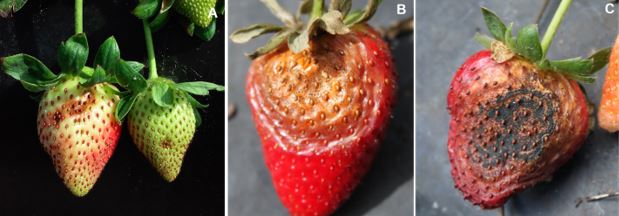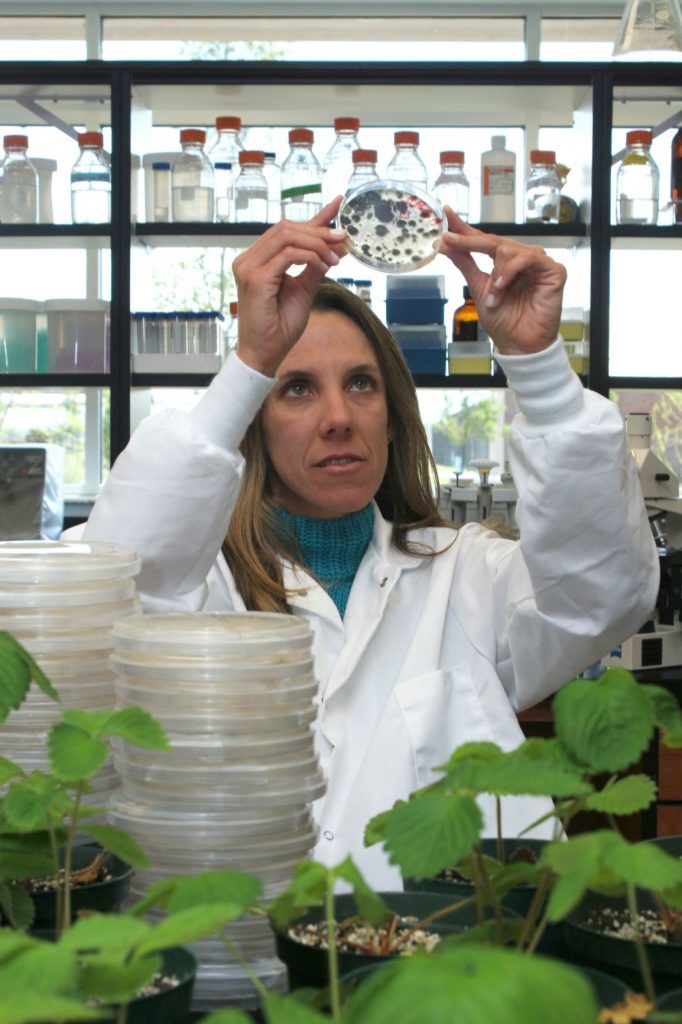By Clint Thompson

A calm disease year for Florida’s strawberry growers meant fewer instances of Neopestalotiopsis Fruit Rot disease. After the previous couple of seasons, producers welcomed the break, says Natalia Peres, professor of Plant Pathology at the University of Florida/IFAS Gulf Coast Research and Education Center.

“It’s been pretty quiet with few exceptions from growers that got plants that were highly infected early in the season. Those were not as productive. Compared to last season and the season before, the impact of the disease was minimal,” Peres said.
Neopestalotiopsis causes leaf spots on strawberry plants. It can develop quickly and produce spores on the leaves. It can cause severe leaf spotting and fruit rot under ideal weather conditions. It was first discovered during the 2018-19 production season in five Florida farms and was attributed to one nursery source in North Carolina.
Peres offered her opinion on why the disease has not been as prevalent this year as it has been previously. One factor was the weather, which was dry and cool this winter. It was really good for berry production, not as good for diseases.
“Mostly the weather, and also, we’re not getting as many plants that were infected early in the season. Growers were really trying to work with the nurseries, and nurseries were being very transparent about reporting when they had issues. Then growers could make that decision whether they want to bring those plants or look for plants somewhere else. A lot of growers ended up going somewhere else if they knew there was a problem with a certain issue,” Peres said.
“I think those two things; the weather and being able to get the plants that are not highly infected at the beginning of the season.”










